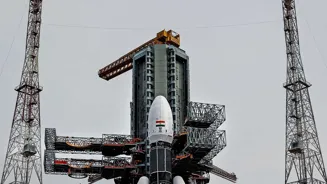What is the story about?
New Delhi: Indian Space Research Organisation (ISRO) has unveiled the first look of how India’s own space station — Bharatiya Antariksh Station (BAS) module.
The design was unveiled during the two-day National Space Day celebrations. India is planning to launch its home built space station, Bharatiya Antariksh Station (BAS) by 2028 which will make among a very few to have their own space laboratory. At present, there are only two space stations, one the International Space Station (ISS), and another of China. The ISS is run by the 5 nations while China operates its own Tiangong Space Station.
What we know about Bharatiya Antariksh Station
- India plans to have five modules of the Bhartiya Antariksh Station in place by 2035 as part of its ambitious plans for the space sector.
- The BAS-01 module is expected to weigh 10 tonnes and will be placed in a low earth orbit at 450 km above the earth.
- BAS will be equipped with indigenously developed Environmental Control and Life Support System (ECLSS), Bharat Docking System, Bharat Berthing Mechanism, automated hatch system, platform for microgravity research and technology demonstration, viewports for scientific imaging and crew recreation.
- The BAS will also have provision for refilling of propulsion and ECLSS fluids, radiation, thermal and Micro Meteoroid Orbital Debris (MMOD) protection, space suits, airlocks to support extra vehicular activity and plug and play integrated avionics.
- The BAS is expected to serve as a research platform for studying various aspects of space, life sciences, medicine, and interplanetary exploration.
- It will provide an opportunity to study the effects of microgravity on human health and test essential technologies needed for long-term human presence in space.
- The space station will support space tourism, with India entering the commercial space sector by leveraging the orbital lab’s resources.
- It will contribute to ongoing international collaborations and serve as a hub for scientific research and also inspire younger generations to consider careers in space science and technology.
- The massive 3.8 meter x 8 meter BAS-01 model was the center of attraction among those attending the National Space Day celebrations at the Bharat Mandapam.
Do you find this article useful?














